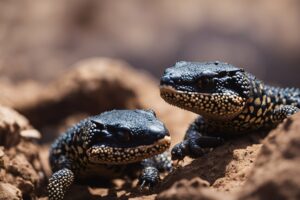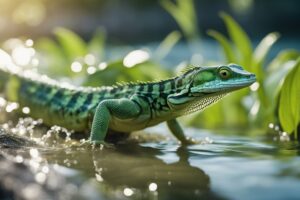Imagine a world where dragons soar through the trees, their wings outstretched to catch the wind.
While fire-breathing giants may be the stuff of legend, there’s a real creature that glides through the forests of Southeast Asia with a similar grace.
They’re known as gliding lizards or “flying dragons,” and they’ve mastered the art of aerial navigation without ever taking true flight.
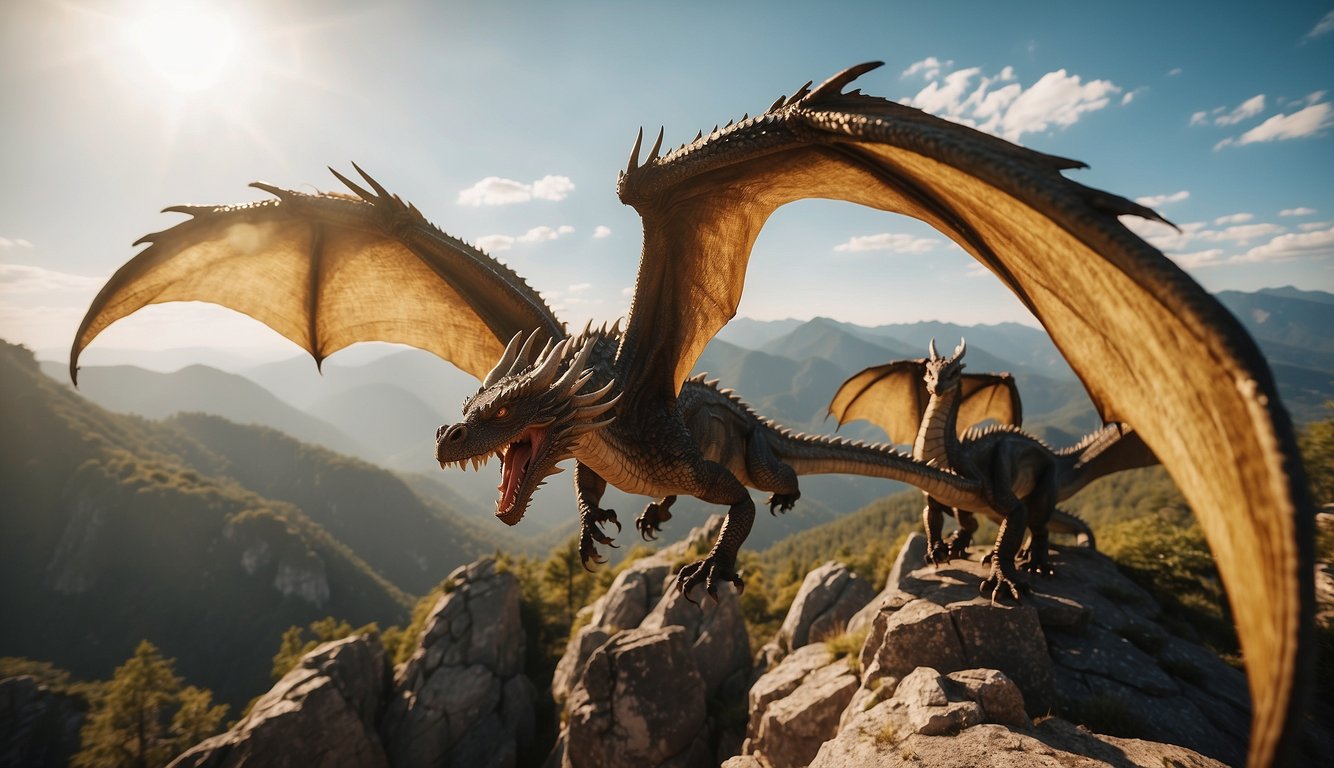
Gliding lizards belong to the genus Draco, and these remarkable reptiles have developed a fascinating adaptation.
They possess extended ribs that stretch out to form “wings,” which are actually flaps of skin called patagia.
This unique feature allows them to glide from tree to tree in search of food or to escape predators.
While they can’t ascend like birds or bats, their ability to glide for distances of up to 60 feet is impressive.
These living dragons ignite the imagination, but how do they manage these aerial feats?
The science behind their gliding mechanism is as intriguing as it is effective.
By angling their patagia and controlling their body movement mid-air, they can navigate and maneuver through the forest canopy with surprising accuracy.
Watching a gliding lizard leap and sail gracefully can make you wonder what other secrets nature has yet to reveal.
Exploring Gliding Lizards
Gliding lizards are remarkable reptiles that have evolved the remarkable ability to glide through the air, offering an astounding spectacle of nature’s ingenuity.
Their adaptation to an aerial lifestyle opens a window into the fascinating intersection of biology and physics.
What Are Gliding Lizards?
Gliding lizards, also known as “flying dragons,” belong to the genus Draco.
These lizards cannot truly fly like birds; instead, they glide from tree to tree in the dense forests of Southeast Asia.
This ability is not for show — it’s a means of locomotion to escape predators, search for food, and find mates.
The skills they possess for navigating their airborne paths through the forest canopy are as vital to their survival as their vibrant colors are captivating to the eye.
The Anatomy of Flight in Lizards
One might wonder how a lizard manages to glide. The secret lies in their unique anatomy.
These lizards are equipped with elongated ribs that extend and retract, supporting a membrane called the patagium.
When they leap into the air, the patagium stretches out, creating a wing-like surface that catches the air.
This structure acts as a parachute and allows them to control their descent with finesse.
Each glide can cover remarkable distances, sometimes exceeding 10 meters! It’s a clever adaptation, isn’t it?
The aerodynamics of gliding lizards is a prime example of nature’s resourcefulness.
Scientific Insights
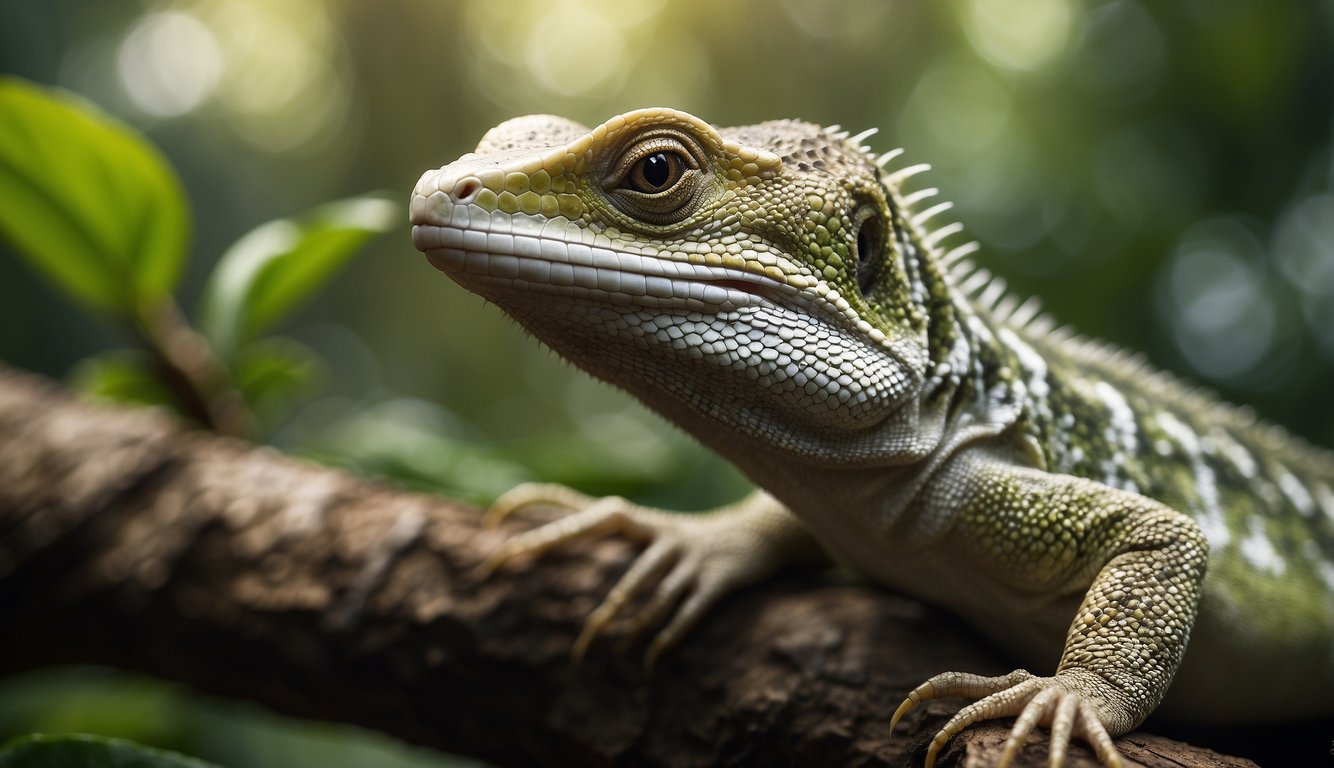
Before diving into the details of how some lizards resemble mythical dragons, let’s explore the fascinating ways these animals have adapted to their environment, particularly in the realm of gliding from tree to tree.
Evolution of Gliding in Lizards
As one peers into the lush canopies of Southeast Asia, they might catch a glimpse of the Draco genus of lizards, the so-called ‘flying dragons’.
These lizards have developed a remarkable form of locomotion quite distinct from that of their earthbound relatives.
To escape predators or traverse the forest’s vast vertical landscape, they evolved elongated, rib-supported patagia—flap-like structures that serve as wings.
It’s a marvel of nature that suggests a strong natural selection favoring gliding abilities in arboreal, or tree-dwelling, ecosystems.
Scientists have deciphered that such evolutionary advancements don’t arise overnight; they are the result of a series of small modifications over millions of years, indicating not just an adaptation to survive but to thrive.
Mechanics of Gliding
The mechanics of gliding among Draco lizards are captivating in their simplicity and yet complex in their physiology.
These creatures take a bold leap into the air, extending their ribs sideways, thereby unfurling their wing-like patagia to catch the wind.
The surface area of their body dramatically increases, allowing them to glide gracefully through the air.
Their tail assists in steering, while the patagium acts much like a parachute, notably without the ability to flap like true wings.
Researchers have found that these lizards can control their glide by adjusting the angle of descent and body orientation, which helps them land precisely on their intended target.
Could you imagine being so in tune with the air currents that you could soar from one tree to another without a flutter of your wings?
Gliding Lizards in Their Habitat
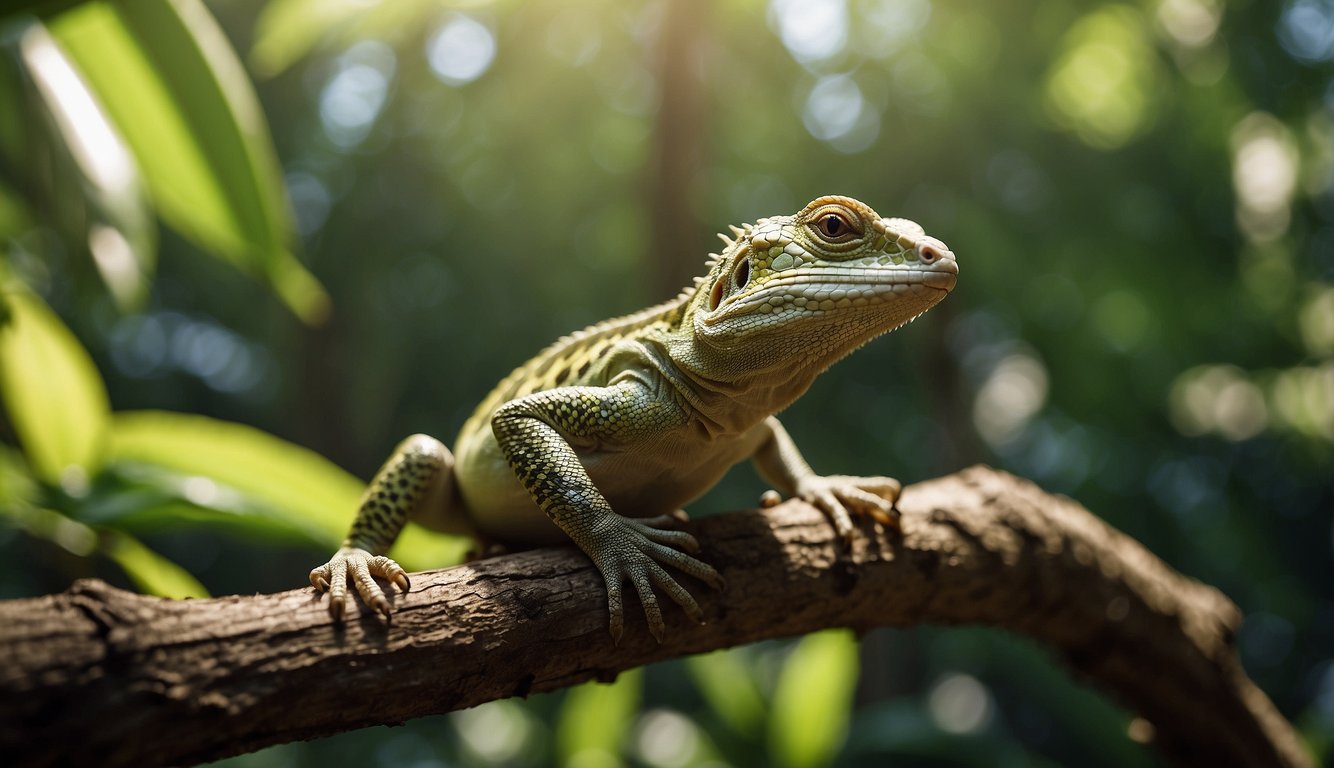
Before diving into the world of gliding lizards, it’s important to know that these remarkable creatures have adapted to soaring through their forest homes, creating an airborne lifestyle that’s as fascinating as it is unique.
Geographical Distribution
Imagine you’re walking through the dense forests of Southeast Asia, your eyes catch a glimpse of something unusual – a lizard soaring gracefully from one tree to another.
That would be the astounding gliding lizard, taking advantage of the sprawling canopy that their habitat provides.
The Draco genus, the scientific group these lizards belong to, are predominantly found in regions like Malaysia, the Philippines, and Borneo.
Each species has carved out a niche in specific areas, preferring the warm and humid climates that tropical rainforests offer.
Ecosystem Roles and Diet
As you watch these lizards glide, consider the vital role they play in their ecosystems.
Not just aerial acrobats, gliding lizards are also predators and prey. They feast on insects such as ants, termites, and small beetles, maintaining insect populations and thus playing a critical part in the food web.
Did you know that their diet also includes other small invertebrates occasionally?
By consuming a variety of prey, they help keep the ecosystem balanced and healthy.
Their presence indicates a robust, biodiverse habitat, as these lizards require a plentiful supply of prey and suitable gliding launch points – typically tall trees.
In turn, they serve as nourishment for larger predators, illustrating the interconnectedness of life in their lush forest home.
Frequently Asked Questions
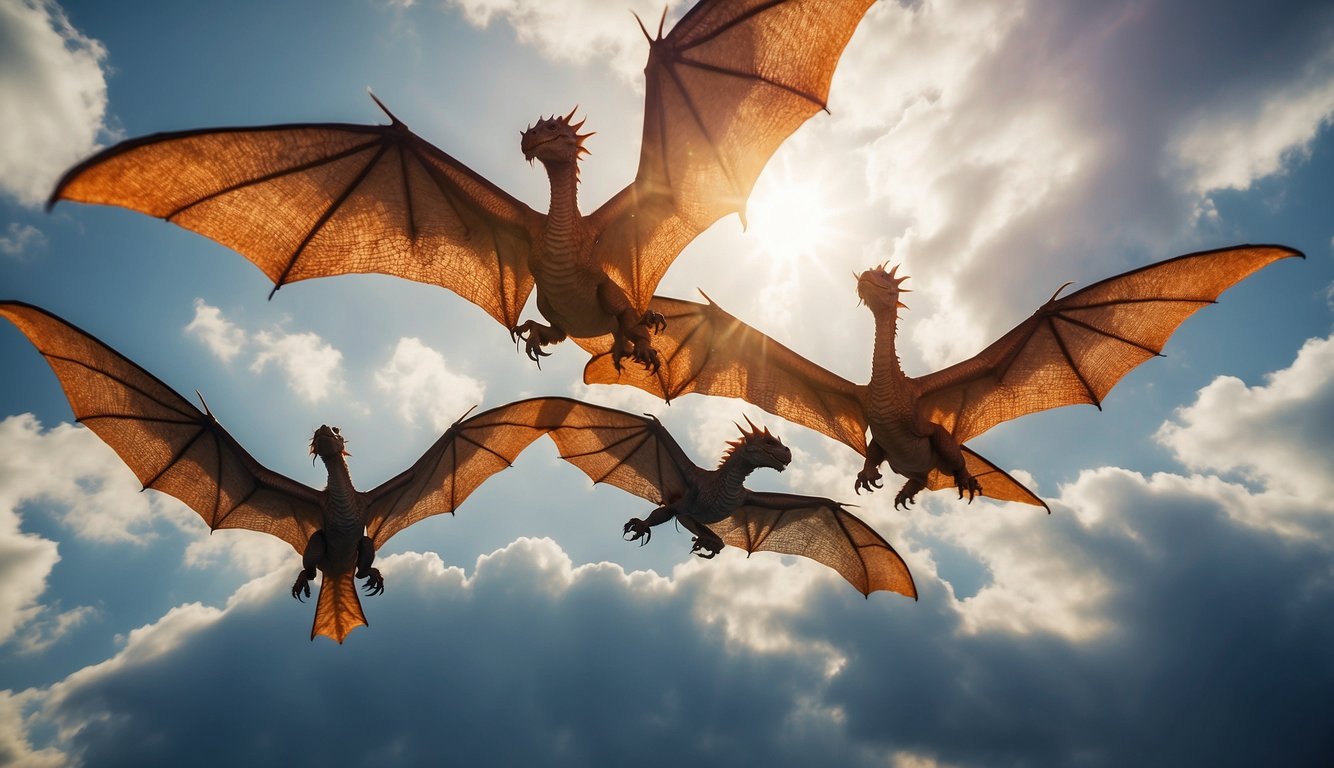
In this journey to uncover the mysteries of Draco lizards, one cannot help but marvel at the splendid adaptations that enable these “flying dragons” to glide through the air.
From the realities of their care as pets to their incredible evolutionary history, these questions peel back the layers of fantasy to reveal the fascinating truth.
What incredible adaptations allow Draco lizards to glide through the air?
The Draco lizard is equipped with elongated ribs that extend and retract.
When spread, these ribs stretch a thin membrane of skin, forming wing-like structures called patagia, which catch the air and allow the lizard to glide from tree to tree.
It’s a masterful piece of natural engineering, granting the Draco lizard its dragon-like allure as it soars through its forest kingdom.
Can I have a Draco lizard as a pet, and what care would it require?
While it might be tempting to keep a Draco lizard as a pet, their specific needs make them challenging to care for.
They require a habitat that closely mimics their natural environment, with plenty of vertical space for climbing and gliding, and a temperature and humidity-controlled enclosure.
These lizards also need a diet of live insects, a demand that can be a commitment for any potential pet owner.
How do Draco lizards compare to the mythical dragons we see in stories?
Mythical dragons are often portrayed as large, fire-breathing creatures that can fly, often invoking fear or awe.
In contrast, Draco lizards are small, harmless reptiles with the unique ability to glide.
While they can’t breathe fire or tower over castles, their graceful flights and scaly appearance provide a living glimpse into a world where dragons rule the skies.
What are the habitats of the Draco lizards, and how do they live in the wild?
Draco lizards call the warm and humid forests of Southeast Asia their home.
They spend most of their lives in the trees, a lifestyle known as arboreal, rarely descending to the ground.
This treetop existence protects them from many predators, and their gliding ability is key to moving about in search of food and mates.
How do scientists think flying dragon lizards could have evolved?
Scientists suggest that Draco lizards evolved their gliding abilities as a way to escape predators and move quickly between trees without having to descend to the risky forest floor.
Over countless generations, it is believed that natural selection favored those with longer ribs and more expansive patagia, leading to the remarkable gliders we see today.
Aside from Draco lizards, what other animals have developed the ability to glide?
The natural world is full of innovators, and several other species have developed the remarkable ability to glide.
Some mammals like flying squirrels and sugar gliders spread their limbs to stretch a membrane and sail through the air.
Similarly, the paradise tree snake flattens its body and makes undulating motions to achieve aerial locomotion.
These creatures each found unique pathways to take to the skies, showcasing nature’s diverse approaches to the same challenge of gliding flight.



